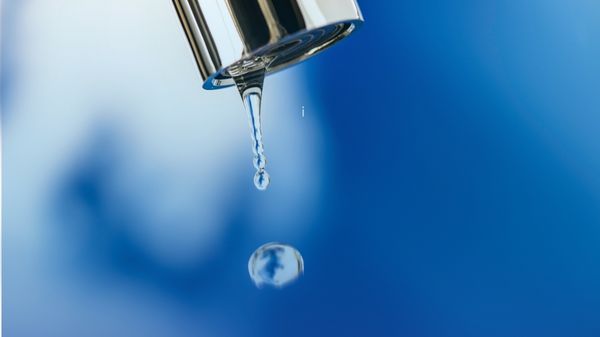To build a DIY thin air water generator, first gather tools like screwdrivers and a range of materials including a high-quality dehumidifier and an eco-friendly power source such as solar panels. Start by designing a condensation unit to effectively capture atmospheric humidity and assemble it making sure all parts are airtight to prevent leaks.
Install an energy-efficient cooling system reinforced with sustainable materials to minimize the environmental impact. Connect and test your system thoroughly to guarantee functionality and water purity. Maintaining your unit involves routine checks and cleaning to preserve efficiency. Further exploration reveals additional insights on maximizing output and sustainability.
Key Takeaways
- Gather necessary tools and materials such as a dehumidifier, water purification system, solar panels, and PVC piping.
- Design the water generator considering layout, size, optimal humidity levels, and energy sources for efficiency.
- Assemble the condensation unit ensuring an airtight design and eco-friendly material usage.
- Install and maintain the cooling system using high thermal conductivity materials and ensure regular coolant and filter replacements.
- Set up the water collection mechanism with durable, eco-friendly materials and test the entire system for functionality and water quality.
Understanding Atmospheric Water Generation
Atmospheric water generation (AWG) harnesses the moisture present in the air to produce clean drinking water, offering a sustainable solution to water scarcity. This isn’t just pulling rabbits out of hats; it’s about pulling H2O out of thin air! Let’s explore how this magic happens.
First off, humidity levels are your new best friends. The higher the humidity, the more water you can extract—like wringing a wet towel. But it’s not just about sweaty air; air pressure and climate factors also throw their hats into the ring. These elements dictate how effectively your AWG system can perform its party trick—condensation. This process is similar to how rainwater harvesting systems collect water, albeit on a smaller scale and with a different source.
Speaking of condensation principles, think of them as the secret sauce to your water-making recipe. By cooling air below its dew point, your AWG coaxes water droplets out of the air, like coaxing a cat out from under the bed. Easy, right?
But here’s where your inner eco-warrior comes into play: energy efficiency and environmental impact. You don’t want your AWG guzzling power like a thirsty elephant. Opt for energy-efficient designs that minimize environmental footprints—because who wants to trade one environmental problem for another?
Lastly, consider unit capacity—essentially, how big a splash your AWG can make. Whether it’s a puddle or a pool, make sure it matches your hydration needs.
Essential Tools and Materials
To kickstart your atmospheric water generator project, you’ll need a few key tools and materials that are vital for assembly and operation. First off, grab a high-quality dehumidifier—this isn’t the time to skimp unless you fancy drinking water that’s less appealing than your last blind date.
Considering the rise in record-breaking heat in many areas, a reliable dehumidifier is essential in extracting water from the air efficiently. You’ll also need a robust water purification system. Think of it as a bouncer at a club, only letting in the VIP molecules.
Now, don’t forget about energy efficiency—your setup should be more of a marathon runner than a sprinter. Look into solar panels or wind turbines to keep things running without turning your electricity bill into a horror story. This approach not only keeps your costs down but also contributes to global efforts against climate change.
Additionally, gather some basic tools like screwdrivers, pliers, and, unless you’ve got the grip strength of a superhero, a good wrench.
Materials-wise, stock up on piping—preferably PVC for its durability and cost-effectiveness. You’ll also need filters (charcoal or sand are your new best friends) and a condenser coil that’s as reliable as your dog when you open a bag of chips.
Designing Your Water Generator
Start designing your water generator by first considering the layout and size of the area where you’ll install it. You don’t want to end up with a behemoth that won’t fit through your door or, worse, one that hijacks your entire living space—unless you’re into that sort of thing.
When pondering design considerations, think about the Goldilocks zone of air humidity—too little and your machine is just a fancy paperweight, too much and you might as well open a local swimming pool.
Now, let’s talk energy sources. Are you a solar aficionado, or is wind more your style? Maybe you’re an old-school electricity enthusiast? Choose wisely to keep both your conscience and wallet happy.
Efficiency optimization is no joke. You’re building this to hydrate, not irritate. Aim for a design that minimizes energy use while maximizing water output. It’s like hitting two birds with one stone—though no actual birds should be harmed in making your water generator.
Also, don’t ignore sustainability factors and environmental impact. Opt for materials that are as gentle on the planet as they’re tough on air. And, of course, guarantee user safety unless you’re aiming for a Darwin Award. Design aesthetics? Let’s just say, if it looks like a spaceship, you did something right—or very wrong.
Assembling the Condensation Unit
Once you’ve settled on the design of your water generator, assembling the condensation unit is the next step. Let’s immerse ourselves in the nuts and bolts—or should we say, the drips and drops—of putting this moisture magician together.
First off, understanding condensation principles isn’t just cool, it’s downright chilly! Remember, this unit’s job is to make water out of thin air, literally. You’ll start by constructing the chamber where the magic happens. This involves setting up surfaces for the air to cool and condense upon.
Choose materials that love cold more than a polar bear in a snowstorm. It’s also crucial to choose eco-friendly materials whenever possible, as these contribute to the overall sustainability of your project and have less environmental impact.
Now, consider the humidity factors. Higher humidity = more water. It’s like choosing between a sprinkle and a downpour. To maximize efficiency, confirm your unit is airtight. Any leaks and you’ll lose more than just water; you’ll lose your cool, literally.
Remember, using eco-friendly materials in your construction not only benefits the environment but can also lead to long-term financial benefits, such as reducing the frequency of purchasing new components. Use sustainable materials where possible. Think recycled metals or biodegradable plastics. Not only does it save the planet, but it also saves you from the side-eye from your eco-conscious pals.
Assemble with precision, tighten all connections, and there you have it—a condensation unit ready to harvest the air’s hidden treasure. Next up, setting up the cooling system, but let’s not get ahead of ourselves. Stay tuned!
Setting Up the Cooling System
You’ll start setting up the cooling system by selecting the right components that balance efficiency with sustainability. Follow these installation tips to guarantee your system is both effective and conserves energy. Regular maintenance of your cooling unit keeps it running smoothly and prolongs its lifespan, saving you money and reducing waste.
Selecting Appropriate Cooling Components
Selecting the right cooling components is essential for the efficiency and longevity of your water generator. You’re not just building a contraption; you’re crafting the chill factor for dewy success!
First up, let’s talk heat exchange. The core game here is thermal conductivity. You want materials that whisper sweet nothings to heat, transferring it away as efficiently as a teenager cleaning their room when promised Wi-Fi.
Look for a heat exchanger made from materials with high thermal conductivity. Copper and aluminum are like the cool kids of the thermal world, offering both exceptional performance and a knack for quick heat dismissal. Remember, the better the material at playing hot potato with heat, the more efficient your water generator will be.
Don’t skimp on the cooling fins and fans either. These are the unsung heroes that work in the shadows to keep things cool behind the scenes. Opt for a fan that balances airflow with noise – unless you enjoy the soothing sounds of a jet engine while hydrating.
Innovative solutions like using phase change materials or incorporating passive cooling strategies can also boost efficiency and sustainability. Get creative and maybe, just maybe, you’ll turn air into water like a modern-day alchemist!
Cooling System Installation Tips
Now that you’ve chosen your high-performance cooling components, it’s time to install them in your water generator. First things first, let’s make certain you don’t turn your workspace into a winter wonderland — unless that’s your thing, of course.
Position your cooling unit in a central area to maximize energy efficiency. You’ll want to avoid any hot spots, unless you’re trying to cook eggs on your generator!
Next, connect the cooling system with flair and a touch of genius. Use insulated tubing to keep the cold in and the warmth out — think of it as your system’s own cozy winter jacket. This step is essential for maintaining an eco-friendly operation and preventing your energy bills from skyrocketing.
When hooking up the electrical components, remember: colors matter. Red to red, black to black, and definitely not the other way around unless you’re keen on sparking a mini fireworks show. Use these troubleshooting techniques: double-check all connections and test the system before full operation. A small hiccup during testing beats a full-blown system meltdown any day.
Maintenance of Cooling Units
Regular maintenance of your cooling units is vital for sustaining peak performance and extending the lifespan of your water generator. Let’s plunge into the nitty-gritty without getting our feet wet, shall we?
First off, coolant replacement isn’t just a fancy term to throw around at parties. It’s essential. Think of it as giving your machine a revitalizing drink. You wouldn’t want to run a marathon on last year’s water bottle, right? Swap out that old coolant to keep things chill and efficient.
Next up, filter cleaning. This is no different than detangling a hairbrush. Unless you enjoy clumps of unknowns clogging up the works, regular filter maintenance is a must. It prevents your unit from huffing and puffing, helping maintain that sweet spot of energy efficiency.
Now, onto system optimization and performance monitoring—sounds high-tech, but it’s basically just ensuring your setup isn’t slacking off on the job. Keep an eye on it like you’d a suspicious cat near an open tuna can. Component upgrading? Absolutely. It’s like swapping out those old sneakers for a snazzy new pair. Better parts mean better performance and less energy gulp.
Turn Air into Water: Secure Your Future with Air Fountain
Installing the Water Collection Mechanism
As you install the water collection mechanism, you’ll want to select materials that are durable yet eco-friendly, ensuring sustainability and efficiency in your water generator. Begin the assembly process by following a clear, step-by-step guide that focuses on securing connections and minimizing waste. Regular maintenance is essential; adopt best practices that keep the system running smoothly and prolong its lifespan without frequent replacements.
Selecting Collection Materials
Choosing the right materials for your water collection mechanism is essential for both efficiency and sustainability. You don’t want to end up with a contraption that’s about as useful as a chocolate teapot, do you?
When selecting materials, consider the type. Stainless steel might scream durability and make your device look like a spaceship, but it’s also pricey. A more budget-friendly option could be high-grade plastics or even specialized fabrics that are corrosion-resistant and don’t leach chemicals.
Now, let’s talk collection efficiency—because who likes wasting effort? Materials with smooth surfaces tend to gather and funnel water more effectively than their rough-textured cousins. Think of it like choosing the best slide in the playground; you want the one that gets you zipping down without sticking halfway!
Also, ponder over the environmental impact. Opting for recyclable or sustainably sourced materials isn’t just good karma; it’s like giving Earth a high-five.
Assembly Process Overview
With your materials selected, it’s time to plunge into the assembly process of your water collection mechanism. Let’s face it, engineering something that plucks water from thin air sounds like something out of a sci-fi movie, but here you are, doing it in your garage!
First up, align your condensation coils. Think of this as arranging spaghetti on a plate—except you can’t eat these, and they collect water, not marinara sauce. Place them strategically within the housing unit to maximize air exposure and water yield. This isn’t just about sticking parts together; it’s about creating a symbiotic dance between form and function.
Here are a few design considerations to keep in mind:
- Efficient Space Utilization: Make sure every inch serves a purpose.
- Accessibility for Maintenance: You’ll thank yourself later.
- Environmental Impact: Choose materials and methods that smile back at nature.
Next, connect your system to a power source and install the fan. The fan is the unsung hero here—it woos the humid air into the coils like a romantic in a cheesy novel.
Maintenance Best Practices
Installing your water collection mechanism correctly will guarantee its longevity and efficiency. First up, you’ll want to immerse yourself in the glamorous world of filter replacement. Think of it as changing socks for your system – it keeps everything fresh and avoids stinky situations. Regular swaps maintain high-quality water and keep the grime at bay.
Next, let’s talk condenser cleaning, a significant step not just for hygiene but for your system’s morale. Envision this: a clean condenser is like a happy lung, breathing easy and improving your gadget’s energy efficiency. And don’t forget about humidity control; it’s not just for hair days but essential for preventing your setup from going into a meltdown.
Now, efficiency isn’t just a buzzword; it’s your new hobby. System monitoring and troubleshooting techniques are your best pals here. They’re the Sherlock and Watson of performance optimization, detecting and solving every hiccup before your water yield drops.
And remember, safety precautions aren’t optional. They’re the lifeguard at your water park, making sure everything runs smoothly.
Electrical Configuration
Setting up the electrical configuration of your water generator involves careful consideration of power sources and wiring to guarantee efficient energy use and sustainability.
First, let’s explore the heart of the beast — the circuit design. You’ll need a circuit that’s as robust as a coffee-fueled engineer during finals week. This isn’t just about connecting colorful wires; it’s about ensuring that each connection maximizes efficiency and minimizes waste.
When selecting your power supply, think of it as choosing a dance partner for the energy ball. You want something that can keep up with the demand without stepping on your toes (or in this case, causing power surges). Aim for a power source that compliments your setup like avocado on toast.
Here’s a quick checklist to keep you on track:
- Select a sustainable power source: Solar, wind, or even hamster wheels if you’re feeling quirky.
- Optimize your circuit design: Use energy-efficient components that don’t just sip but also save power.
- Ensure proper insulation and safety measures: Nobody wants a shocking surprise!
Testing the Device
Now that your water generator’s electrical configuration is set up, it’s time to test the device thoroughly to verify everything functions as intended. Roll up your sleeves, because this is where the magic happens, or where you find out you’ve accidentally built a very expensive paperweight.
First, let’s plunge into the performance evaluation. You’ll want to check if your generator is indeed pulling water from thin air and not just making you believe in miracles. Start by running the device for a minimum of 24 hours. Monitor the output continuously; if you notice any fluctuations, it might be time to double-check those connections. Did you connect the flux capacitor to the thingamajig? Just kidding—there’s no flux capacitor here!
Next up, quality assessment. This isn’t just about quantity, but the quality of water being produced. You’re going for pure H2O, not something that resembles a diluted soup. Use a water quality test kit to analyze the output. If the results make your eyebrows rise higher than usual, consult the manual again—it’s probably trying to tell you something important.
Maintenance Tips
Regular maintenance is essential to guarantee your water generator continues to operate efficiently and sustainably. Don’t let a gunky filter or a grimy reservoir rain on your parade! Here’s how to keep your machine in tip-top shape.
First off, you’ve gotta keep that filter cleaner than your Sunday best. Filter cleaning isn’t just about dust—it’s about ensuring every sip of water is as fresh as a daisy. In addition, don’t forget about the seals. Seal replacement might sound as thrilling as watching paint dry, but it keeps the leaks at bay and your machine humming happily.
Now, let’s get into the specifics:
- Reservoir Sanitization: Keep it cleaner than your conscience on confession day. Regular scrubbing prevents buildup and keeps water tasting heavenly.
- Component Inspection: Like playing detective, but with bolts and screws. Catch those wear-and-tear culprits before they cause trouble.
- Efficiency Monitoring: Keep tabs on performance like a hawk. If it’s slacking, it might need a tweak or two.
Don’t just cross your fingers and hope for the best. Use this troubleshooting guide to stay ahead. Whether it’s humidity control or performance evaluation, staying proactive about maintenance means you’ll always have water, come rain or shine.
Frequently Asked Questions
Can This Device Function in Extremely Low Humidity Conditions?
You’re tackling extreme conditions, huh? Well, this device has its quirks. In areas with extremely low humidity, the generator’s efficiency drops faster than a bad joke at a party. Humidity levels are essential; without enough moisture, it’s like trying to squeeze water from a rock. You might need to innovate with some add-ons to boost its performance. Remember, it’s about working smarter, not harder—like using a dehumidifier in a desert!
How Much Water Can I Expect to Generate Daily?
The amount of water you’ll generate daily hinges on your water generation techniques and moisture collection methods. In ideal conditions, you might squeeze out several liters! But let’s face it, if you’re in a desert dreaming of an oasis, you might end up with just enough to tease a thirsty cactus. Keep tweaking those innovative solutions, though. Sustainability isn’t just a buzzword; it’s your ticket to turning thin air into a water banquet—or at least a modest drink!
Is the Water Produced Safe for Drinking Without Filtration?
Imagine you’ve just created your own moisture farm like on Tatooine. Cool, right? But before you sip that freshly condensed water, consider this: without proper water purification, you might be gulping down more than just H2O.
Health considerations are essential, as airborne contaminants can compromise water safety. To guarantee it’s drinkable, integrating innovative, sustainable filtration technologies is critical. Always filter first—unless you fancy the idea of turning your stomach into a science experiment!
What Are the Environmental Impacts of Using a Water Generator?
When you’re harnessing moisture from thin air, you’ve gotta ponder the environmental impacts. Key concerns include energy consumption and sustainability. If your water generator chugs energy like a thirsty elephant, it’s hardly a green solution, right?
Look for ways to power your device with renewable energy. Innovate smarter, not harder! Ensuring your setup is energy-efficient not only saves the planet but also keeps your conscience—and wallet—happier in the long run!
How Does Atmospheric Temperature Affect the Device’s Efficiency?
You’re battling the very whims of nature itself when you tackle atmospheric temperature! This juggernaut impacts your water generator’s efficiency drastically. Temperature variations often play tag with humidity levels, dictating how much water you can harvest from thin air.
Staying savvy with these elements guarantees your device operates at peak efficiency. Innovatively tweaking settings to adapt to the daily drama of temperature shifts keeps your water supply flowing and your green conscience clear.
Conclusion
Now that you’ve navigated the nuances of assembling your atmospheric water generator, you’re set to sustainably source water straight from the sky. Carefully check connections, consistently clean components, and cultivate a cycle of regular reviews to retain its reliability.
Your pioneering project not only promises a perpetual water supply but also propels us toward a more sustainable, solution-oriented future. Harness hydration innovatively and inspire others to explore ecological engineering endeavors. Drink deeply from your DIY device and delight in your dedication!




